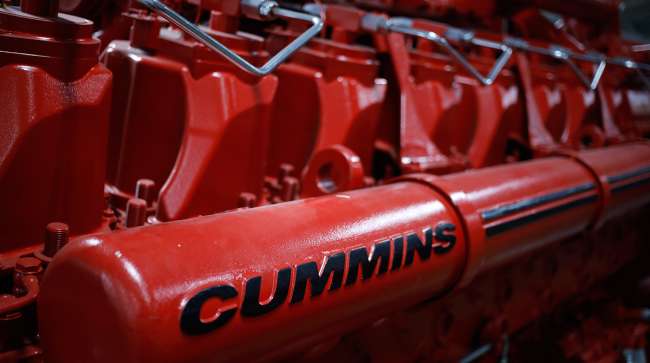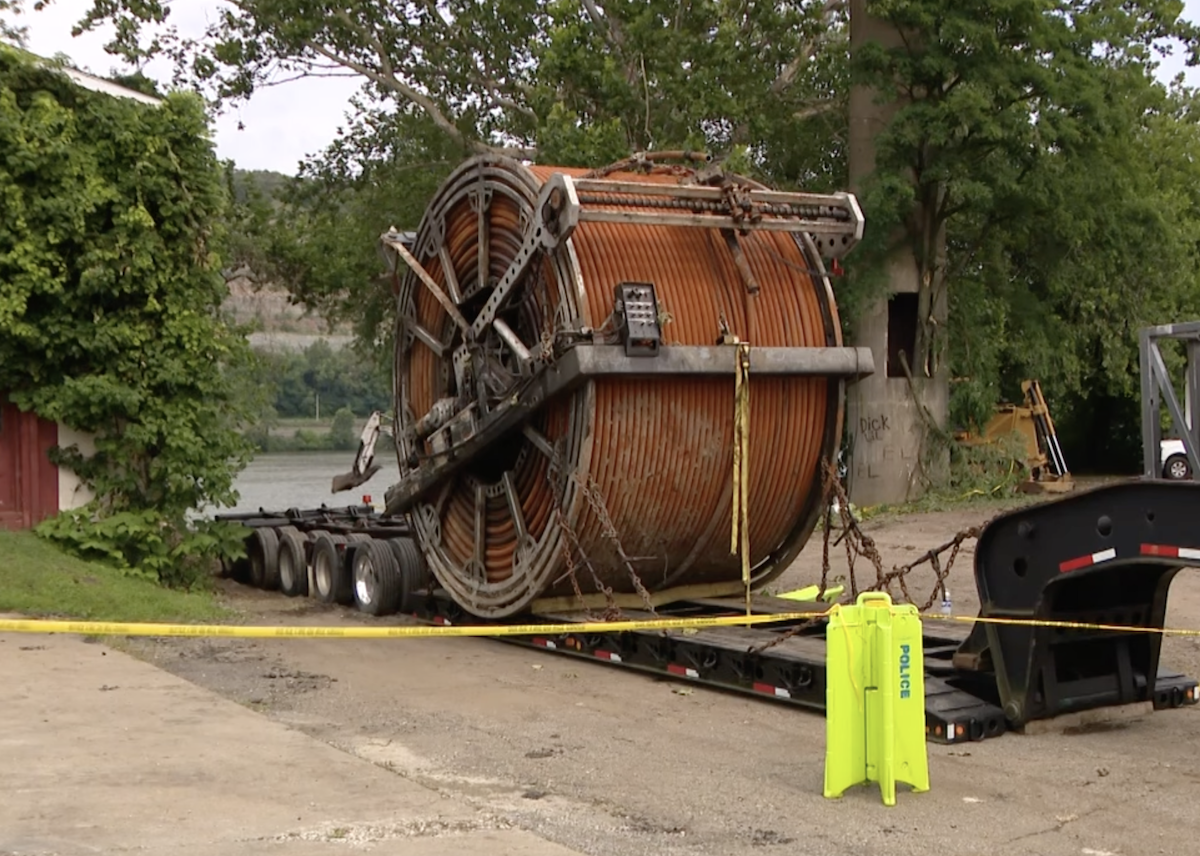A Cummins diesel engine at the Cummins plant in Seymour, Ind. (Luke Sharrett/Bloomberg)
Equipment manufacturer Cummins saw revenue fall in the first quarter of 2025 on the back of weaker on-highway truck sales in both North and South America and broad buyer worry about business trends.
Sales of the company’s engines, driveline components and brakes were hammered by uncertainty surrounding global economic prospects through the rest of this year and into 2026, along with the unsettled outlook for U.S. emissions regulations, CEO Jennifer Rumsey said on a May 5 earnings call with analysts.
Times are so uncertain, Rumsey and fellow executives said, that Cummins is not providing guidance for revenue or profitability for the remainder of 2025.
For Q1, Cummins’ overall revenue decreased 3% to $8.17 billion from $8.4 billion. Sales in the company’s engine division totaled $2.77 billion during the quarter, down 5% year over year from $2.93 billion. Regionally, revenue in the segment decreased 4% in North America and 11% in international markets due to lower on-highway demand in the U.S. and Latin America.
Cummins Reports First Quarter 2025 Results
Cummins said heavy-duty truck revenue for Q1 totaled $921 million, compared with $1.06 billion in the year-ago period. Heavy-duty truck engine shipments totaled 26,700 in the most recent quarter, compared with 33,600 a year earlier, it added.
Sales by Cummins’ components division slumped 20% from $3.33 billion to $2.67 billion, with North American and international revenue both taking hits. Drivetrain and braking systems revenue fell to $1.06 billion from $1.23 billion a year earlier while revenue from emissions solutions — largely aftertreatment systems — fell to $902 million from $971 million in Q1 2024.
That said, soaring demand for data centers lifted revenue at Cummins’ power systems division by 19% year over year to $1.65 billion from $1.39 billion.
The division’s successes helped lift an otherwise down profit picture; Cummins posted net income of $824 million in Q1, compared with a $2 billion profit a year ago. However, the Q1 2024 result included a $1.3 billion gain Cummins recorded on the sale of Atmus Filtration Technologies.
The hazy outlook for the months ahead is unprecedented, Rumsey and Chief Financial Officer Mark Smith said during the analyst call. They pointed specifically to the tariffs President Donald Trump has introduced and the countermeasures from countries around the globe as the primary factor.
“We are entering uncharted territory as the trade tariffs start to have a more significant impact beginning in the second quarter,” said Rumsey. “The breadth and changing nature of the tariffs have introduced a great degree of uncertainty, and mean that at this time we are unable to predict with confidence our expected performance for the year.”
“Uncertainty has increased due to trade tariffs resulting in a slowdown in the global movement of goods, particularly between China and the U.S. It remains to be seen how long the tariffs remain in place and the impact that they have on business confidence and the demand for capital goods,” added Smith.
Cummins’ engine and components divisions are expected to be worst hit.
Seth Clevenger and Mike Senatore dive into the Transport Topics Top 100 list of the largest logistics companies. They address trade challenges, mergers, sector trends and more. Tune in above or by going to RoadSigns.ttnews.com.
“The real market that is very sensitive is in the engine business and components, some of those on-highway markets. And we’re seeing that, right? You saw that on [May 2} with the heavy-duty truck orders for April, where customers are waiting to see what happens and pausing in many cases on placing orders for new trucks,” Rumsey said.
In April, preliminary North American Class 8 net orders totaled 7,600 trucks, ACT Research said. A year earlier, the research group pegged orders at 15,600 trucks.
Smith and Rumsey were asked by one analyst to quantify the impact of the tariffs thus far. Smith declined.
“We’re not [giving out those number]. It’s a very uncertain set of circumstances given the changing and evolving nature of the tariffs. So, we’re not going to quantify that today. Quite frankly, the bigger concern is the broader impact on the overall economic level environment,” Smith told Truist Securities analyst Jamie Cook.
Meantime, proposed rollbacks of stiffer emission regulations for calendar year 2027 engines and model year 2028 chassis by Environmental Protection Agency Administrator Lee Zeldin and some members of Congress are crimping truck demand.

The X10 platform was unveiled in March. (Cummins Inc.)
“In addition to trade and economic uncertainty, there is also uncertainty in North America emissions regulations for 2027. We continue to expect new [nitrogen oxides] regulation to go in place in 2027 and are focused on launching our products on schedule, while also working with the administration as they explore options to lower the cost of existing regulations,” said Rumsey.
“While we believe our product plan is well-positioned, the uncertainty and regulations along with economic uncertainties have led to a weaker-than-anticipated recent orders and also has made a pre-buy for the second half of the year unlikely,” she added.
A rush among fleets to “pre-buy” new trucks was anticipated before the stricter federal emission standards were due to take effect.
In March, Cummins continued to overhaul its engine options for medium- and heavy-duty trucks, unveiling the X10 engine platform and a B-Series engine update.
Cummins’ introduction of the X10 followed a revamp of the flagship heavy-duty X15 engine lineup, including rolling out the X15N natural gas configuration.








